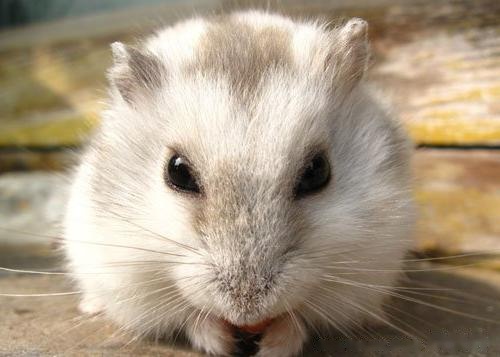Anyone who has kept hamsters as pets knows that hamsters have a limited capacity for cheek pouches. If they are filled with full capacity for a long time, hamsters are prone to red cheek pouches. Phenomenon; if the hidden items deteriorate, it will cause the adverse consequences of cheek pouch inflammation; if the hidden items are sharp objects, it may also pierce the hamster's cheek pouches and cheeks. So what are the symptoms of hamster bursitis and how to prevent it?

Old male hamster
:
In fact, the symptoms of hamster cheek pouchitis are mainly manifested in the swelling of the hamster cheek pouch. You can feel a hard lump when you touch it, like a human acne, and it is lighter When the mouth will be very smelly, so the owner is easy to judge. If the hamster has buccalitis, the owner should help it treat it in time. The longer it is delayed, the more serious it will be.
After understanding the symptoms of hamster buccalitis, the owner should pay more attention not to feed it too much sharp food during daily feeding, because the hamster likes to hide food, so it will hurt after a long time. Its cheek pouch, so buccalitis appeared. For the health of hamsters, the owner must be careful and patient when raising them daily.
:
1. Ensure that the hamster's home is comfortable and food is adequate.
The hamster's full load of food in the cheek pouch is a manifestation of its anxiety about housing and food acquisition. It is more likely to occur in hamsters who move to new homes and hamster babies after weaning. If we can regularly and Provide adequate rat food in a timely manner, while ensuring the comfort of the hamster's home, and this situation will be greatly improved.
2. Avoid perishable, sticky, large or sharp-edged foods.
It is not advisable for hamsters to feed sticky things such as rice dumplings and rice, in order to avoid adverse consequences such as the hardening of the items in the hamster's cheek pouches and resulting in inflammation of the cheek pouches; large pieces of food should be stored and stored by the hamster. After the cheek pouch, the hamster may need a lot of effort to spit out the food. If it can't spit out, there will be a great hidden danger.
3. Daily assistance to remind the hamster to clean the cheek pouch.
When playing with the hamster, you can consciously remind the hamster to clean up the bulging cheek pouch in time, and slide it gently with your fingers from the back of the hamster's cheek pouch, that is, the cheeks, to the mouth. The hamster will enjoy such a massage and spit out the excess food it has hidden in time. However, this only applies if your hamster is very close to you, otherwise it is normal for the hamster to run away quickly or give you a bite.
Diseases come in from the mouth and prevent microscopic progression. As long as we grasp the details of the usual feeding, many accidents will not happen, and the patient will not be able to turn to your hamster.
![[Dog Training 5] The training method of pet dog dining etiquette](/static/img/12192/12192_1.jpg)




